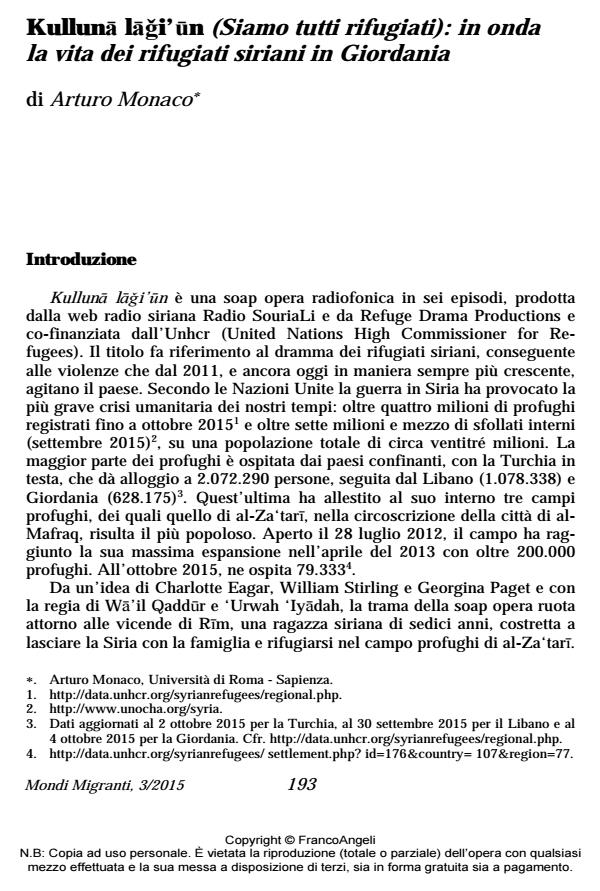Kullunā lāǧi’ūn (We are all refugees): the life of Syrian refugees in Jordan on air
Journal title MONDI MIGRANTI
Author/s Arturo Monaco
Publishing Year 2016 Issue 2015/3
Language Italian Pages 20 P. 193-212 File size 146 KB
DOI 10.3280/MM2015-003010
DOI is like a bar code for intellectual property: to have more infomation
click here
Below, you can see the article first page
If you want to buy this article in PDF format, you can do it, following the instructions to buy download credits

FrancoAngeli is member of Publishers International Linking Association, Inc (PILA), a not-for-profit association which run the CrossRef service enabling links to and from online scholarly content.
Kullunā lāǧi’ūn is a six-episodes radio soap opera, produced by the web radio SouriaLi and Refuge Drama Productions and co-funded by Unhcr (United Nations High Commissioner for Refugees). The soap opera is focused on Rīm’s story, a fifteen years old Syrian girl who lives with her family in al-Za‘tarī Jordanian refugee camp. Her older brother Fādī tries to marry her to Jordanian citizen against her will. Fīrās, another brother, who lives in Amman far away from his family, decides to come back to al-Za‘tarī and save his sister. Besides them, the everyday life of Syrian refugees community in Jordan goes on. After a brief presentation of the Arabic literary panorama concerned with migration, this contribution primarily takes into exam the genesis of this radio soap opera (development of the idea, models, cast, broadcasting). It then focuses on the series of key problems it deals with which reflect the harsh reality of one of the largest refugee camps in the world: early marriage, domestic violence, water shortage, unemployment, black market exploitation, tensions between Syrian and Jordanian communities. At the same time, it will observe the deep message of hope that is meant to be conveyed to the listeners.
Keywords: Radio soap opera; refugees; Syrian; early marriage; SouriaLi; al-Za‘tarī
Arturo Monaco, Kulluna lagi'un (Siamo tutti rifugiati): in onda la vita dei rifugiati siriani in Giordania in "MONDI MIGRANTI" 3/2015, pp 193-212, DOI: 10.3280/MM2015-003010